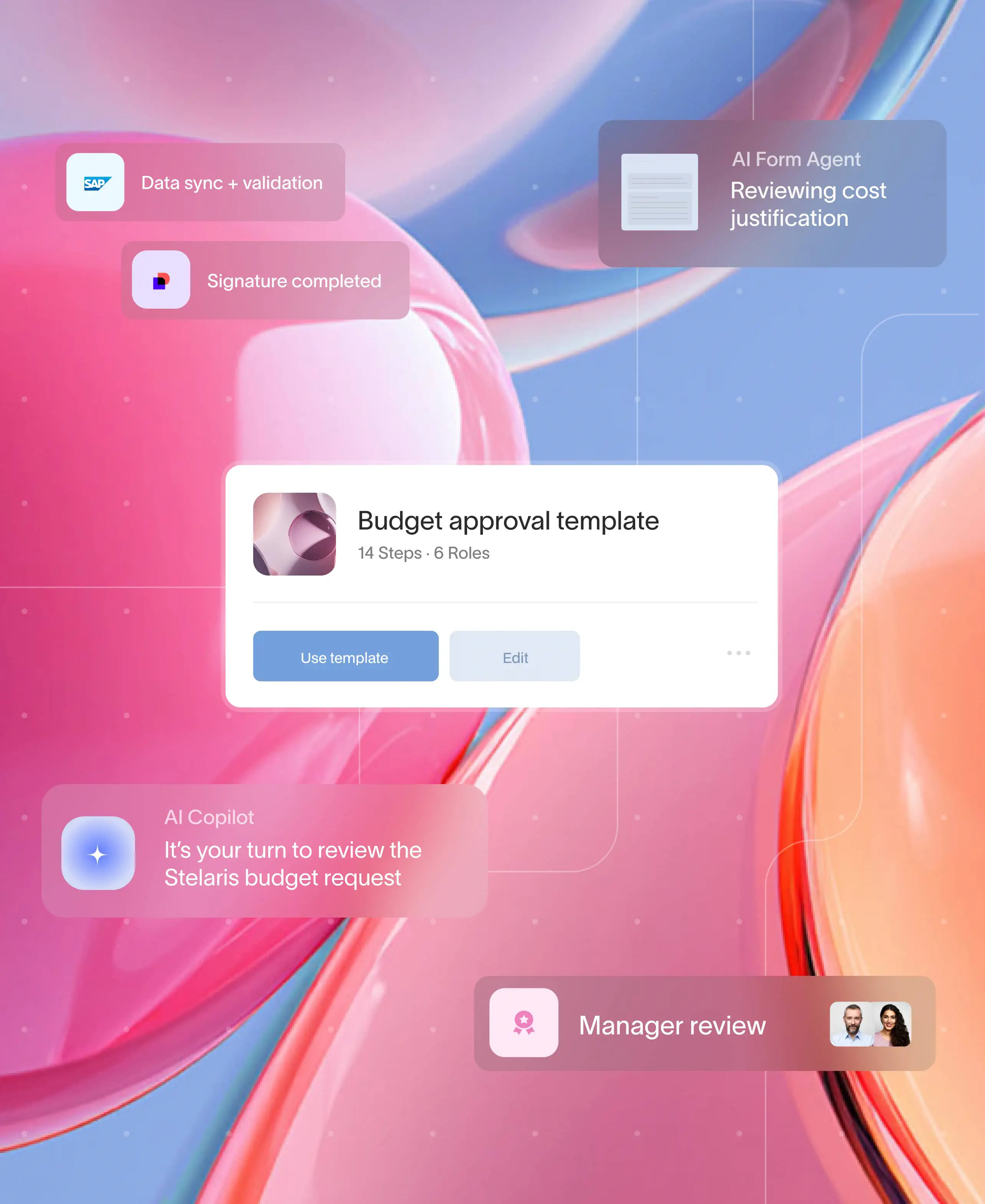
At a glance
- A client portal gives law firms one secure hub where clients can send documents, check updates, and sign approvals without endless back-and-forth.
- Portals replace scattered email threads and phone calls with a single branded space that feels professional and easy to use.
- Core features include messaging, document sharing, e-signatures, audit logs, and mobile access, all designed for seamless integration into legal workflows.
- The right portal helps firms cut delays, reduce admin strain, and improve the client experience from intake to final resolution.
Is your firm wasting time chasing clients? Ever emailed a document…then called to confirm…then followed up a week later…just to hear, “I didn’t get it”?
Legal teams waste hundreds of hours each year juggling inbox threads, unsigned PDFs, missed calls, and clunky file-sharing platforms. It’s not just inefficient; it hurts client experience, too. The fix? A client portal. Not another tool to train for. A single, secure hub where everything lives: case updates, messages, file uploads, approvals, e-signatures, deadlines - all branded under your firm’s name.
This article explains what client portals are, how they work, and why they’re becoming non-negotiable for modern law firms.
What is a client portal for law firms
A client portal is a private, secure workspace where law firms and clients can share documents, exchange messages, and track case progress in real-time. Think of it as your firm’s digital front desk - minus the hold music and email ping-pong.
Instead of chasing signatures or clarifying next steps over the phone or email, everything happens in one place:
- Case updates
- File uploads
- E-signatures
- Intake forms
- Real-time chat
- Payment status
- Shared calendars
The best legal portals are built to feel like a concierge: always on, always updated, and always professional.
Most portals are browser-based, but many modern platforms like Moxo offer fully branded mobile apps so clients can interact from anywhere.
Compare this to your current setup - shared drives, disconnected tools, constant reminders - and it’s night and day.
Benefits of client portals for law firms
Legal work is complex enough. Communication shouldn’t be. A client portal untangles the mess of email threads, missed calls, and lost files—and turns your legal process into a clean, repeatable workflow.
Let’s break down what you actually gain.
1. Save time (and make room for billables)
Staff time wasted chasing updates is time not billed.
According to the Case Status’ 2025 Legal Client Experience Report, firms using portals saved an average of 1,329 hours per year on manual status updates and follow-ups. That’s time freed for actual casework.
Here’s how time savings stack up:
- Document collection: Clients upload files themselves, with reminders.
- Signatures: E-sign eliminates “print, sign, scan, resend” loops.
- Reminders & status updates: Automated, not manually typed.
- Client FAQs: Handled by knowledge bases or pinned updates inside the portal.
2. Cut back on emails, phone tags, and admin drain
Firms report 90% fewer emails and 30% fewer inbound calls when using client portals. Why? Because clients can:
- Log in anytime to see the status
- Message you directly inside the case thread
- Get notified (without bugging you) when something’s needed
Your team stops acting like an answering machine - and gets back to actual legal work.
3. Reduce errors and approval delays
Documents don’t get lost in threads. Versions stay synced. Sign-offs happen faster.
Firms using automated approval flows (like Moxo’s workflow builder) saw:
- Fewer client complaints about “missing” updates
- Faster turnaround times for contract reviews
- Cleaner audit trails for compliance or disputes
4. Improve client satisfaction without working harder
Portals don’t just save you time. They help clients feel in control.
When clients can:
- See what’s next
- Know their document was received
- Track their case status
- They stop calling, stop worrying, and start trusting.
Portals build trust through clarity.
Firms using client portals saw NPS scores rise by over 130% and client retention jump significantly over the year.
5. Strengthen security and stay compliant
Legal teams handle sensitive data. A good portal protects it.
Unlike email, portals offer:
- End-to-end encryption
- Role-based access controls
- Activity logging for compliance audits
- Granular file permissions
Moxo, for instance, lets firms log every action, lock files behind permissions, and enable two-factor authentication.
It’s not just safer - it’s built for bar association standards.
This table shows how replacing manual touchpoints with a client portal reduces friction and saves hours per case.
Old way vs. client portal efficiency table
Feature checklist and decision guide for law firm client portals
Let's get sharper. Here’s a focused breakdown of what you need - and how to spot the right fit without wading through fluff.
- Secure encrypted messaging and document sharing: To protect confidentiality and meet ABA/GDPR standards.
- Branded, user‑friendly interface (including mobile apps): Clients trust portals that align with your brand - and mobile adoption rates hit 80% with apps.
- E-signature support and automated workflows (form collection, reminders, approvals): Fewer follow-ups, faster sign-offs.
- Practice management integration: Syncs case data, avoids manual copy‑pastes.
- Compliance features: Two‑factor authentication, audit logs, role‑based access, SOC II or similar.
- Analytics & feedback tracking: Measure usage and satisfaction (NPS, response time).
Quick comparison table: “Your needs” vs “Portal capabilities”
Decision framework: matching firm needs to portal features
- Requirement: If you need to stop chasing missing files
Solution: Use portals with structured document requests and real-time upload tracking. - Requirement: If you need to reduce client calls and status emails
Solution: Choose platforms with automated updates, built-in messaging, and task visibility. - Requirement: If you need to meet compliance and data protection standards
Solution: Look for encryption, audit trails, role-based access, and SOC II readiness. - Requirement: If you need to connect with your case management system
Solution: Pick a portal with integrations (e.g., Clio, MyCase, or direct API support like Moxo).
Comparing client portal options
To illustrate the difference between a basic client portal tool and a comprehensive solution, here’s a quick comparison. We’ll look at how a standard legal client portal software (think a simple portal included with a practice management app) stacks up against a full-featured portal platform (e.g. Moxo’s client collaboration portal) on some key features:
Mini-ROI model: time saved = dollars earned
Let’s say your team spends:
- 8 hours/week answering client status calls
- 5 hours/week chasing missing documents
- 4 hours/week sending reminders
That’s 17 hours/week per legal assistant or associate. Across 3 team members, that’s 51 hours.
With a portal in place, Case Status data shows firms save 1,329 hours per year - that’s around 25 hours/week.
Assume $45/hour fully loaded cost:
25 hrs x $45 x 52 weeks = $58,500 saved annually
Now layer in:
- Fewer mistakes
- Faster turnarounds
- Fewer client complaints
And you’re not just saving money - you’re buying peace of mind.
Where Moxo fits in legal client workflows
Modern law firms don’t have time to babysit software. You need a system that quietly handles the noise - so your team can focus on legal outcomes, not logistics. That’s where Moxo fits.
Unlike generic project tools or portals that feel bolted on, Moxo is purpose-built for structured client execution. It connects people and systems, to orchestrate every legal workflow in one place - securely, clearly, and without friction.
Here’s what sets it apart:
- Visual workflow builder: Create client intake flows, document request sequences, and multi-party approval chains—without code.
- Private-labeled portals: Your clients log into a branded, mobile-ready hub. Your logo, your colors, your tone. No Moxo branding.
- Audit-ready compliance: Every document, message, and approval is logged with full traceability - meeting bar ethics and GDPR alike.
- Mobile-first design + magic links: Clients don’t need to install anything. Moxo emails them secure links to act instantly - on desktop or phone.
- Secure document sharing + version control: Collect, annotate, and organize legal files in one place - no Dropbox links or email chains.
- Enterprise-grade security: Encryption at rest and in transit, role-based access, and two-factor authentication protect every interaction.
- AI nudges and live status (coming soon!): Reminders, progress visibility, and fewer “Did you get my file?” follow-ups.
Law firms using Moxo have reported:
- 80% faster workflows at Veon Szu Law Firm, where switching to a centralized portal cut down on manual follow-ups, phone calls, and document handoffs.
- 60% shorter document turnaround times for Gogo Mediation, after automating client sign-offs and enabling e-signatures through Moxo’s structured flows.
- Higher client retention and referral growth, as firms replaced disjointed email chains with branded, mobile-friendly portals that clients actually used.
It’s not just portal software - it’s a quieter inbox, a faster case close, and a better client experience.
Book your demo now and see how Moxo works with your legal operations, not against them.
Give clients clarity, not email chains
Legal clients don’t need more logins or more emails. They need to know what’s happening, what’s expected, and what’s next. And your firm needs that too.
A client portal isn’t just a tech upgrade - t’s a shift in how you deliver legal service. From chaos to clarity. From manual to automated. From chasing updates to letting the system handle it.
Firms using portals are saving over 1,300 hours a year, reducing admin stress, and giving clients a smoother, more transparent experience. With branded portals, secure messaging, and e-sign workflows, your team gets back to what actually matters: the law.
Whether you're a solo practitioner or managing a growing firm, this is how you scale without burnout. This is how you modernize your practice - without losing your touch.
And if you want to start seeing those results?
Schedule a 15-minute Moxo demo. You’ll know in one call whether it’s the right fit.
FAQs
How secure is a legal client portal?
A legal client portal uses encryption, role-based access, and detailed audit trails to safeguard sensitive data. Platforms like Moxo offer enterprise-grade protection, including two-factor authentication and compliance logging, making them safer than email or generic cloud drives. Learn more about Moxo’s secure legal workflows.
How long does it take to implement a portal?
Most law firms start using client portals within a week. Tools like Moxo come with ready-made templates for intake, approvals, and document collection—so your team can launch fast and refine workflows over time. Explore legal workflow templates you can start with.
What if our clients don’t use the portal?
Client adoption depends on ease of use. Moxo helps drive engagement with branded portals, mobile apps, and email-based “magic links” that let clients view and act on requests - without needing to install anything. Learn how Veon Szu Law Firm boosted adoption by 80%.
Is a client portal better than email?
Yes. Email isn’t built for structured execution. A portal keeps case updates, messages, files, and approvals in one secure space - automatically logged and tracked. Law firms using portals see faster turnarounds and fewer follow-ups. Compare portals vs. traditional workflows.
Does a portal replace our case management system?
No, it complements it. Client portals integrate with case management tools like Clio, MyCase, or Lawmatics - bringing visibility and execution to client-facing processes, while your internal system handles records and billing. Learn more about Moxo integrations.





